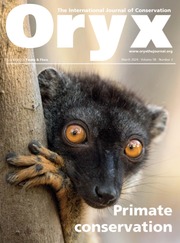With widespread distribution from south-east USA and the Caribbean to Mexico, Central America, and the northern half of South America, the c. 400 species of anole lizards (genus Anolis) are well-known to biologists. According to the Global Reptile Assessment, > 25% of Anolis are threatened with extinction and > 10% are considered Data Deficient (Cox et al., 2022, Nature, 605, 285–290). The most common threats facing many anole species are habitat loss, fragmentation and degradation because of agricultural practices, and urban sprawl. Invasive species, such as feral cats and dogs, can also pose a major threat, particularly for anoles occurring at naturally low densities. According to the IUCN Red List, populations of 13% of anole species are decreasing and 47% have unknown population trends.
Given this, the IUCN Species Survival Commission (SSC) Anoline Lizard Specialist Group was reinstated in December 2024, nearly 10 years after the original group was folded into the IUCN SSC Snake and Lizard Red List Authority. The Group will collaborate with experts and enthusiasts across the species’ ranges to prioritize long-term conservation efforts. We welcome members with interests and skills relevant to Anolis biology and conservation. The new leadership structure, with regional co-chairs and country leads, provides a cohesive framework that will enable the Specialist Group to address the most pressing conservation concerns facing anoles. Working with scientists, conservation organizations, government agencies, civil society and the public, we will ensure anole lizards are conserved, especially in the face of environmental change.
The reinstated Specialist Group will promote collaboration among key organizations and experts dedicated to preserving these species in alignment with the IUCN SSC Conservation Planning Specialist Group's One Plan Approach (cpsg.org/our-work/our-approach/one-plan-approach). For more information about the Anoline Lizard Specialist Group, please contact the Co-Chairs Anna Thonis or Jhan C. Salazar.


